The Play Arc of Fort Rad and the Nature Den
Over the course of each week during our Tink summer camp, I watched how the older children would build a den, fairy house, or destination and once it was all arranged with signage and plumage (truly feathered nests), they would move on or sit back and the younger children would swoop in to play with or in the structures. This is a play arc pattern I find interesting and is a confirmation that the age mix we have shaped (5 through 11, soon to sneak up to 12) is perfect. Our intention in establishing that particular age range is to replicate the free-roaming neighborhood play that many of us are familiar with from our own childhoods. The very format is to achieve something as unstructured as a day well spent in aimless adventuring. Sometimes there is something to show for it at the end of the day and sometimes there is not -- IF you are looking for some tangible outcome. In real life it is often the intangible experiences that have more value.
After our third year doing these Tink camp sessions, we can see that there is a pattern of certain children leading. While it is not always about chronological age, it is often the older children or siblings leading the way. They will set the tone, thinking up activities, challenges, story lines, or pursuits (what we call play arcs). The younger children will first play along the edges of these construction zones. They will occasionally deliver a stick or a piece of yarn to the builders, all the while learning how to build something AND how to be part of that roving group of adventurers. Then at some magical unspoken point in the cycle you will see them dragging in the stumps that will serve as furniture or bits of treasure or cookery which will eventually become central to their play.
This is an important process because we have essentially created a program in which one "generation" of children passes on a set of play codes to the next. Each group has a role to play. Along the way, the children -- without adult intervention -- teach each other how to shape cohesive and exclusively child-led Summertime adventures. Then, with these skills, they in turn will come back the next Summer, or even better, return to their neighborhoods right this very Summer, to share these same play arcs. What a wonderful pollination scheme!
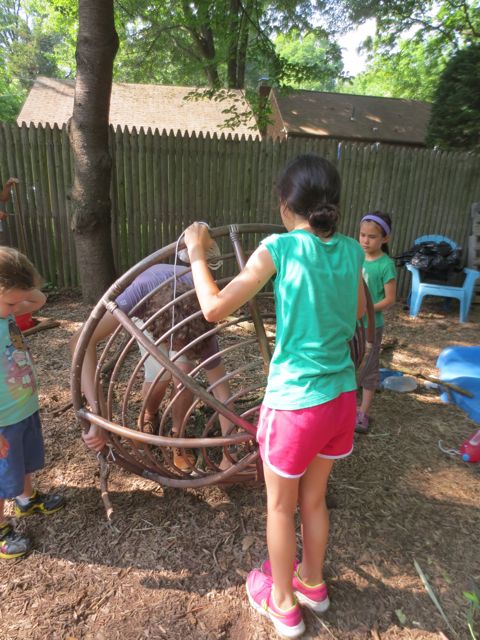
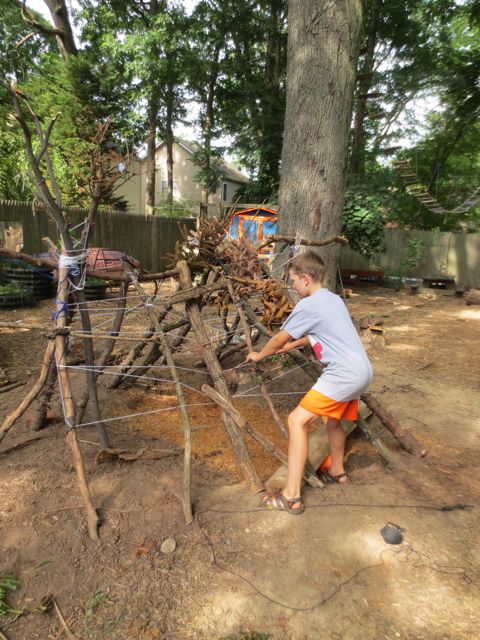
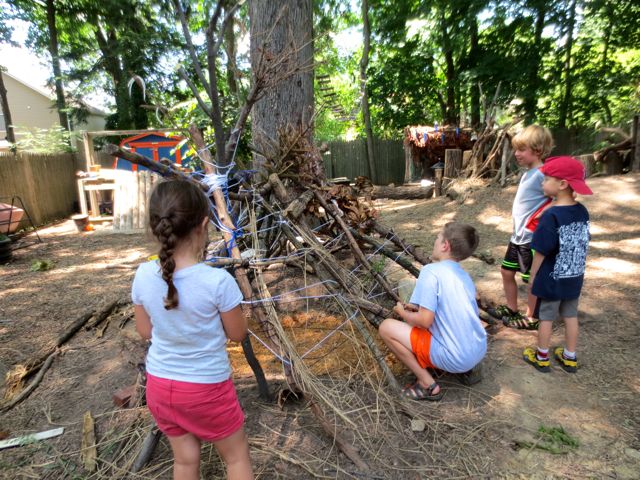
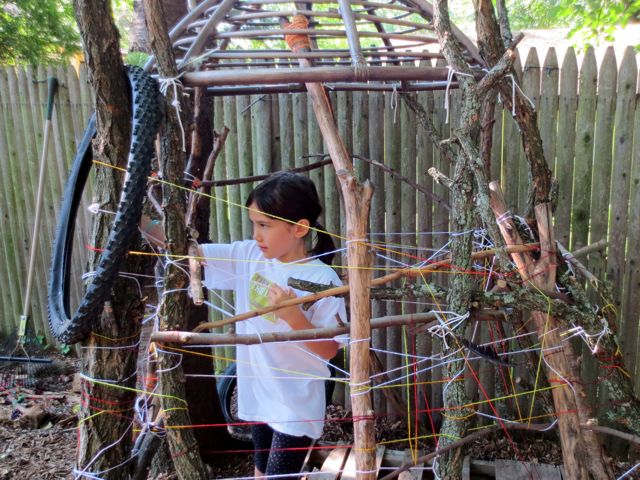

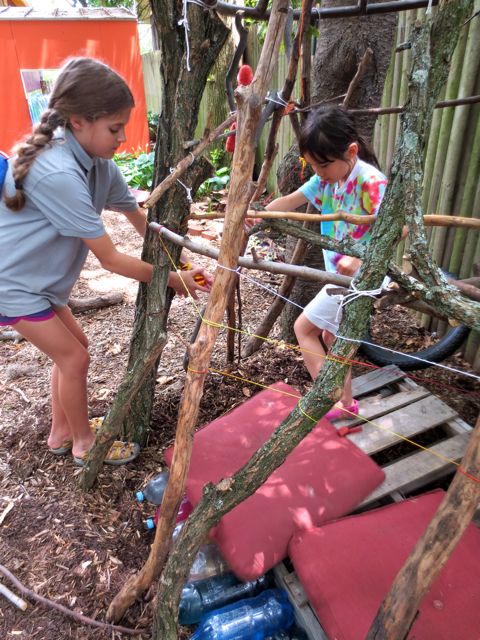
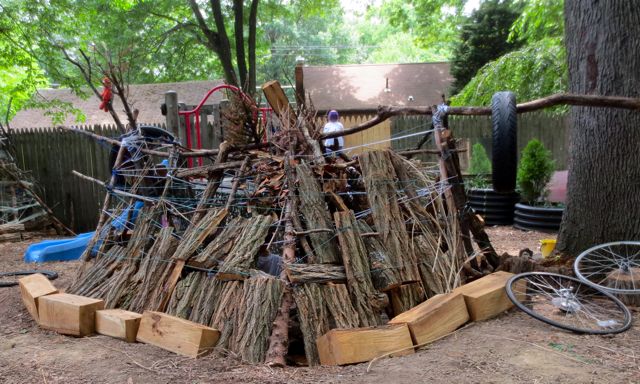
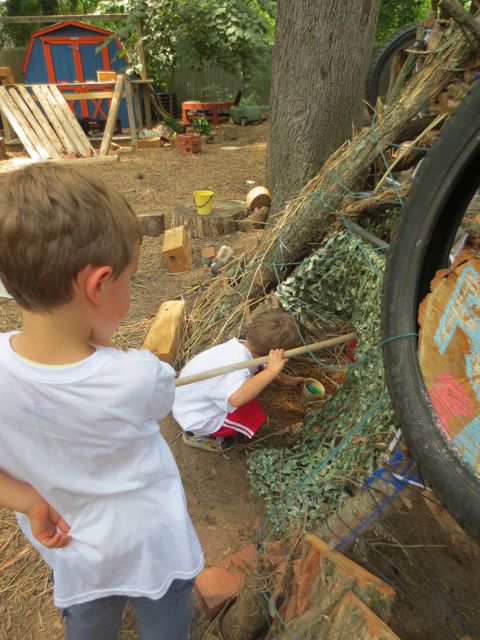
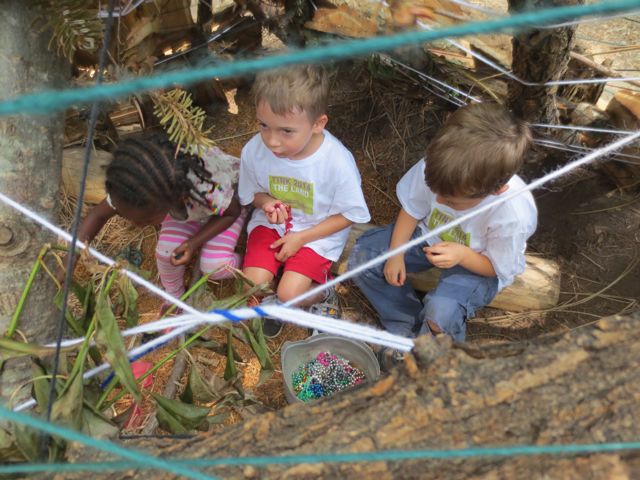
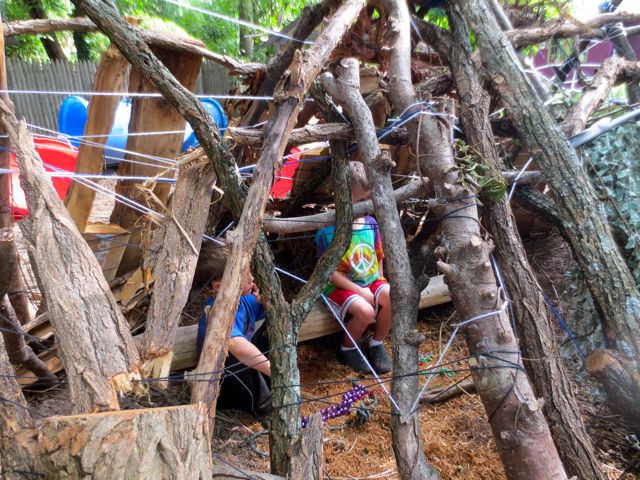
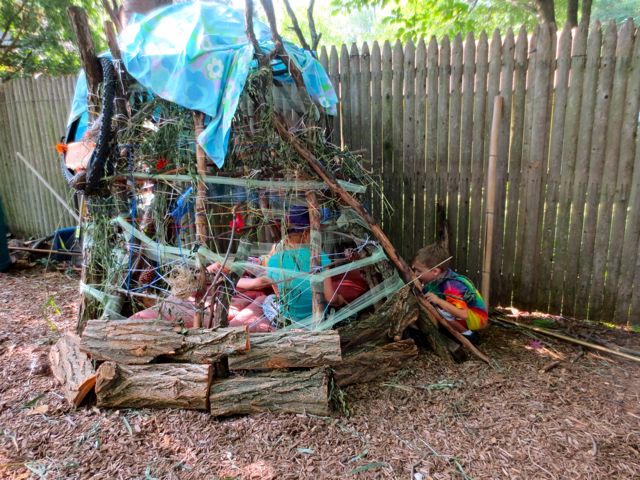
A note about the materials used...
We created two caches or depots of materials. One is in the very back of the yard and the other is in our parking lot. The locations are related to where the things either fell or were dropped off. This has its benefits as the children must drag the items wherever their ideas lead them. Always a fan of heavy work no matter the age! So I suppose we didn't create anything, rather the materials simply collected in place.
We began each week with a tour of the caches. The caches basically consisted of branches, logs, bricks, sticks, shipping pallets, and bark pieces. We also had two garbage bins of sawdust collected from a chainsawing session when one of our parents created great wooden blocks. Those blocks were already in play out in the yard as were a large assortment of stumps, planks, and even more branches. This year, the most important collection seemed to be the yarn bin. The children used this yarn to make wands, branch sculptures AND to hold the dens together. The dens are being held together by the natural tension of branch resting on branch and are reinforced by yarn and ribbon.
The "nature den" features a scavenged bamboo seat as a roof. On my way to work on my first day of Tink, I spied one of those giant circular bamboo chairs on the curb for garbage pick-up. Its curved half circle rests on top of a base so that the top can tip and slide. Aha, the universe was telling me. This you will need right now!
I dragged the top part the three blocks to school past the neighbors going to and fro on that Monday morning. The ones waiting for the commuter bus kindly stepped back onto the grass as I wrangled this bamboo contraption along. "Excuse me," and "Thanks," we nodded greetings as I went along. Even though they were headed off to destinations that did not require them to pick things up from the curb on the way, it seemed that they understood that, of course, other people would and should do exactly that.
